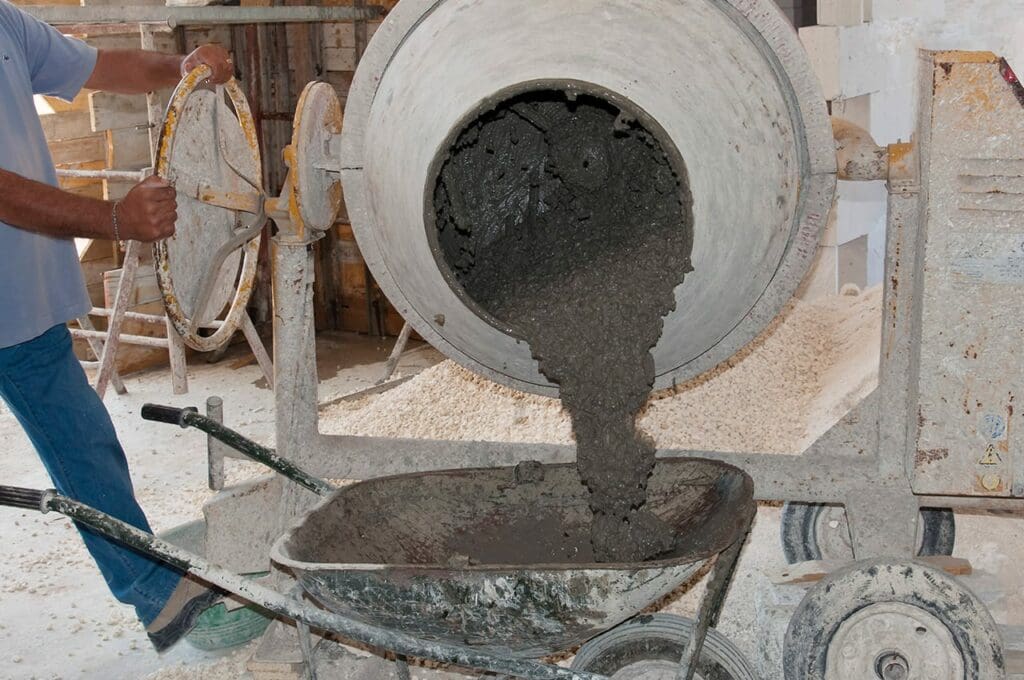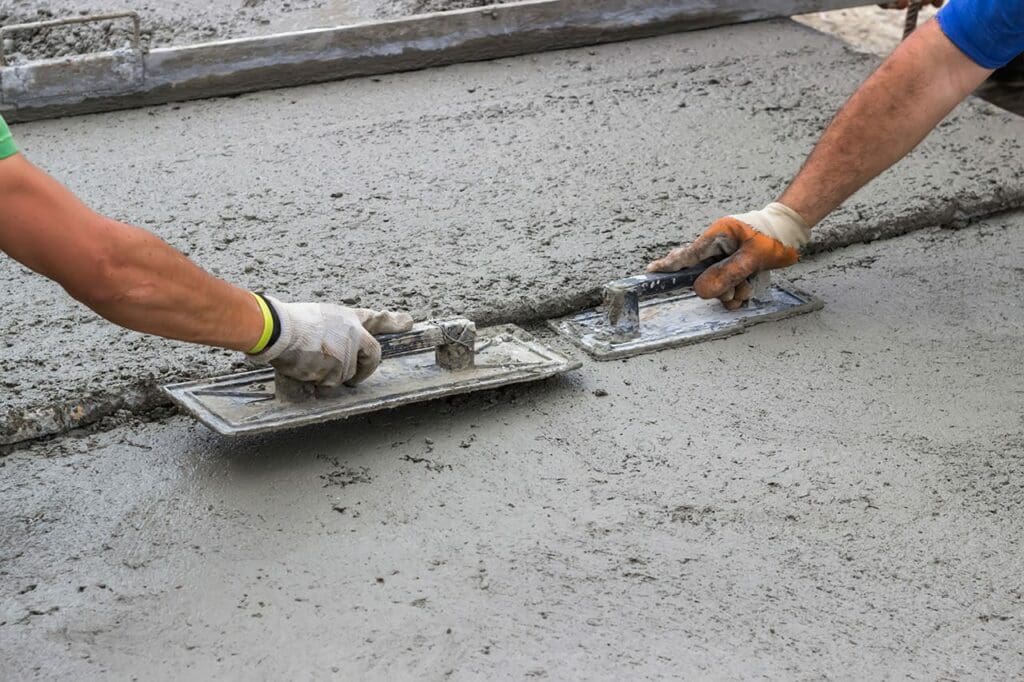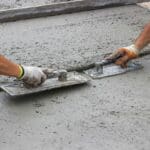Concrete stands as the quintessential material in the realm of construction, underpinning the edifices and infrastructures that define our modern landscape. This article delves into the intricacies of making concrete, shedding light on its components’ significance, the meticulous mixing process, and the pivotal role of quality control in cementing the strength and durability of concrete structures.
Understanding Concrete and Its Paramount Role in Construction

Concrete is a composite material at its core, a blend of cement, water, and aggregates like sand or gravel. The linchpin of this mixture is cement, a fine powder primarily composed of limestone and clay. When water is added, a chemical process known as hydration occurs, transforming the mixture into a robust paste that binds the aggregates into a unified, solid form. This transformation is not merely chemical but a metamorphosis into a material that symbolizes durability and resilience.
The selection and proportion of concrete’s constituents are not arbitrary. The water-to-cement ratio is a critical determinant of the concrete’s final strength. An excess of water can weaken the structure, while insufficient water can compromise its workability. Following the initial mixing, the concrete is poured into moulds, where it embarks on a curing journey, hardening over time to become the backbone of construction projects ranging from humble homes to towering skyscrapers and expansive bridges.
The Foundation: Raw Materials and Cement
The journey of concrete begins with extracting and preparing raw materials, a process that underscores the global economy’s reliance on these natural building blocks. Cement production, in particular, is a complex dance of chemistry and physics involving the heating and grinding of limestone, clay, iron ore, and gypsum to produce clinker, which is ground into the fine powder we recognize as cement. Whether executed through the dry or wet method, this process is imbued with stringent quality control measures to ensure that the cement — the glue of concrete — meets exacting standards.
Diversity in Cement Types and Their Impact
The versatility of concrete is partly owed to the variety of cement available, each tailored for specific construction needs. From anchoring cement, designed for securing fixtures, to fibre-reinforced cement that curtails cracking by enhancing structural integrity, the choice of cement influences the performance and longevity of concrete structures. Fast-setting mixes cater to projects with tight deadlines, underscoring the adaptability of concrete to diverse construction scenarios.
Aggregate: The Skeleton of Concrete
Aggregates lend concrete its structure, much like bones within a body. The shape and texture of these aggregates — whether angular or rounded — play a crucial role in the concrete’s strength. With their interlocking capabilities, Angular aggregates fortify the concrete more effectively than their rounded counterparts, offering a superior mechanical bond. The choice between gravel and stones, the heroes of coarse aggregate, depends on the project’s specific demands, be it the heavy load of a driveway or the lighter touch of decorative concrete.
Water: The Catalyst of Concrete’s Strength
Water’s role transcends mere moisture; the catalyst activates cement’s binding properties through hydration. The balance of water to cement is delicate, with implications for the concrete’s usability and strength. Too much water dilutes the mix, compromising its integrity, while too little impedes the hydration process, affecting the mix’s workability and strength. The ideal water-to-cement ratio is a golden mean that ensures the concrete’s durability and structural integrity.
Mixing: The Art and Science of Concrete
Mixing concrete, whether by hand or machine, is both an art and a science. Concrete mixers, ranging from electric and diesel-powered behemoths to portable units, facilitate the blending of components into a homogeneous mix, ensuring consistency and quality. Proper operation and maintenance of these mixers are paramount, emphasizing the importance of technique in achieving the desired consistency and strength of the concrete.
Frequently Asked Questions

What is the ideal water-to-cement ratio for concrete?
The ideal water-to-cement (w/c) ratio typically ranges from 0.4 to 0.6. This ratio is crucial for achieving the desired balance between workability and strength of the concrete. A lower ratio results in stronger concrete but may be harder to work with, while a higher ratio makes the concrete easier to mix and pour but can weaken the final structure.
How do different types of cement affect concrete?
Different types of cement are formulated to meet specific needs. For example, fast-setting cement is designed for projects that require quick strength gain, while sulfate-resistant cement is used in environments where the concrete is exposed to high sulfate levels. The type of cement chosen can significantly impact the concrete’s performance in terms of strength, durability, and resistance to environmental factors.
Why is the shape of aggregate important in concrete?
The shape and texture of aggregate affect the concrete’s strength and workability. Angular aggregates provide better interlocking and contribute to higher strength, while rounded aggregates make the mix more workable. The choice between angular and rounded aggregates depends on the specific requirements of the construction project.
Can the quality of water used in concrete mixing affect the final product?
Yes, water quality can significantly impact the strength and durability of concrete. Water used in concrete mixing should be clean and free from impurities such as oils, acids, alkalis, and organic materials, which can adversely affect the hydration process and weaken the concrete.
How long does it take for concrete to cure fully?
Concrete typically takes about 28 days to reach its designed strength, although it continues to gain strength slowly thereafter. The curing process is crucial for the development of strength and durability. Proper curing practices, such as keeping the concrete moist and at the right temperature, are essential for achieving the desired properties of the concrete.
What are the common mistakes to avoid when mixing concrete?
Common mistakes include adding too much water, which can weaken the concrete; not mixing the concrete thoroughly, resulting in an uneven distribution of ingredients; and using poor-quality raw materials, which can compromise the strength and durability of the concrete. It’s also important to avoid overworking the concrete once placed, as this can lead to segregation and weaken the structure.
How can I ensure my concrete mix is of high quality?
Ensuring high-quality concrete involves carefully selecting and measuring the raw materials, using the proper water-to-cement ratio, thoroughly mixing the components to achieve a uniform consistency, and adhering to proper curing practices. Regular testing of the concrete mix for slump, air content, and strength can also help ensure the concrete meets the required specifications.
Is it necessary to use reinforcement in concrete?
While not all concrete projects require reinforcement, using steel bars, mesh, or fibers can significantly enhance the tensile strength of concrete, which is naturally strong in compression but weak in tension. Reinforcement is particularly important in structural applications where the concrete is subjected to heavy loads or requires added durability and crack resistance.
Final Words
Concrete is a meticulous process combining science, art, and technology. From the careful selection of raw materials to the precise mixing and curing of the mix, each step is critical to creating concrete that upholds construction projects’ structural integrity and longevity. As the foundation of modern construction, concrete’s importance cannot be overstated, embodying the strength, durability, and resilience required to build the future. In understanding the nuances of making concrete, we gain insight into the bedrock of our built environment, a testament to human ingenuity and the relentless pursuit of progress.




